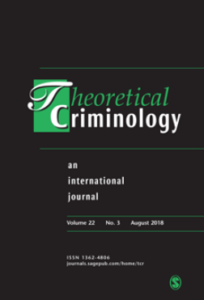Border disorder: On urban boundary work and crime in the divided city (2019)

Authors: Meirav Aharon Gutman
Abstract: This article offers exploration of one spatial aspect of crime in the divided city: the disproportionate concentration of crime events along Jerusalem’s former socio-historical border (known as ‘Green Line’) that is clearly reflected in a spatial analysis of crime. Offering insight into this phenomenon, an ethnographic investigation reveals the manner in which neighborhood residents cope with crime by blocking entry to it from the east, thereby reinforcing and reproducing already existing urban divisions. This second, qualitative layer of research enables us to follow urban boundary work in action, which is important, as focusing on boundary work (as opposed to borders) offers insight not only into divided cities as fact but into the mechanisms, logic and culture that reproduce and reshape their urban divisions. In contrast to hegemonic analyses that highlight the importance of macro-politics in shaping the lines that divide the divided city, this article considers crime, and the way residents struggle against it from below, as a central mechanism that reinforces and reproduces the divisions of the divided city.